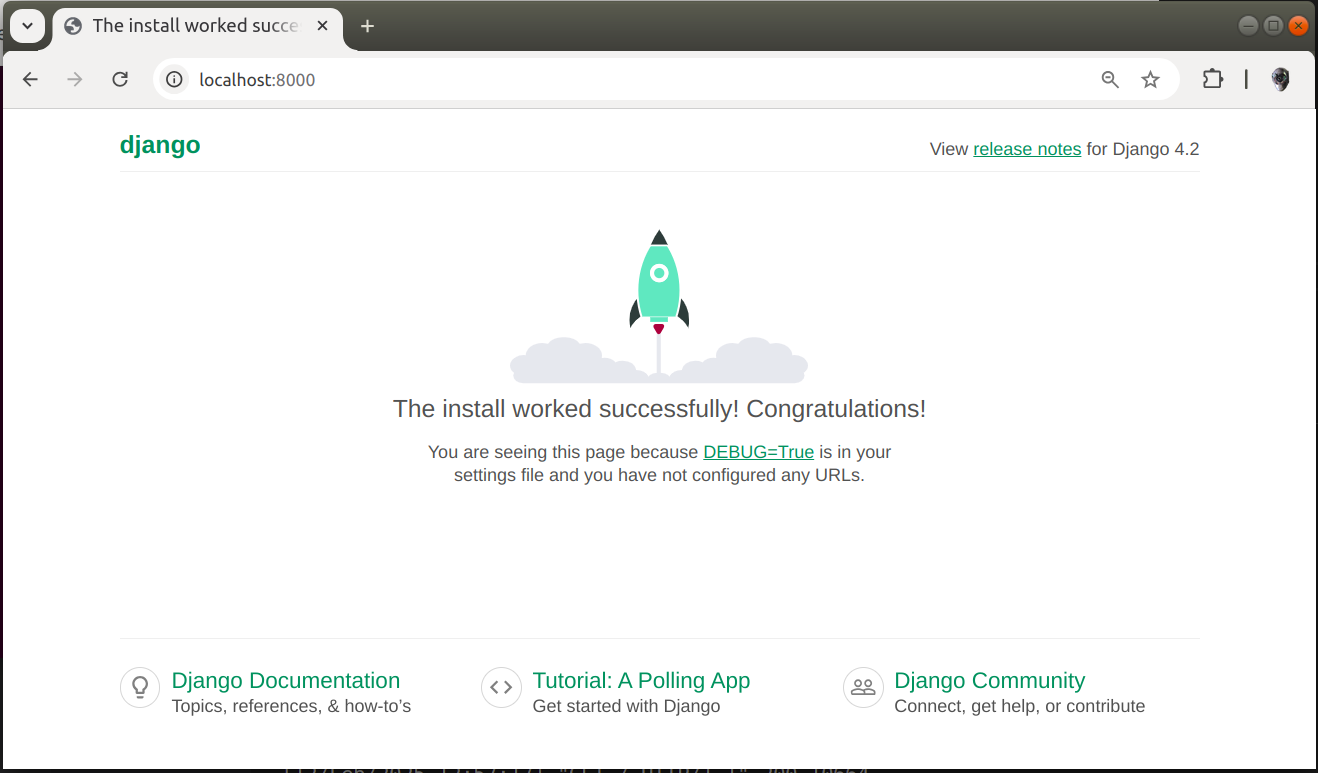Django Tutorial (Part 1)¶
As mentioned in the previous section, this is a small tutorial designed to introduce basic parts of Django in a way that is simple and easy to understand. For a more comprehensive explanation, see the tutorial in Django’s official documentation: https://docs.djangoproject.com/en/4.2/intro/tutorial01/
1. Install Django¶
Begin by making sure that you have installed Django. For this tutorial we are going to be using the latest stable version of Django, which is 4.2.
pip install "django~=4.2"
2. Create a Django Project¶
Create a new Django project by running the following commands:
django-admin startproject tutorial
cd tutorial
python manage.py startapp chapters
This will create a new directory called tutorial with the following structure:
tutorial/
manage.py
tutorial/
__init__.py
settings.py
urls.py
wsgi.py
asgi.py
chapters/
__init__.py
migrations/
__init__.py
admin.py
apps.py
models.py
tests.py
views.py
These files are the basic structure of a Django project.
3. Run the Development Server¶
Now we’ve gone through enough of the setup that you should be able to start the development server by running the following command:
python manage.py runserver 0.0.0.0:8000
You should see the following output:
Watching for file changes with StatReloader
Performing system checks...
System check identified no issues (0 silenced).
February 12, 2025 - 13:03:37
Django version 4.2.19, using settings 'tutorial.settings'
Starting development server at http://0.0.0.0:8000/
Quit the server with CONTROL-C.
In your web browser, go to http://localhost:8000/. You should see a “Welcome to Django” page.

4. Edit the Django Project settings¶
Open the file tutorial/settings.py in your text editor and add the chapters app to the INSTALLED_APPS list. When done it should look like this:
INSTALLED_APPS = [
'django.contrib.admin',
'django.contrib.auth',
'django.contrib.contenttypes',
'django.contrib.sessions',
'django.contrib.messages',
'django.contrib.staticfiles',
'chapters',
]
5. Concluding Part 1¶
This concludes part 1 of this mini Django tutorial. Now you know:
The basics of installing a python package
How to create a new Django project
The basic structure of a Django project
How to start the development server
In the next part of this tutorial, we will be covering concepts including views, models, and templates.

